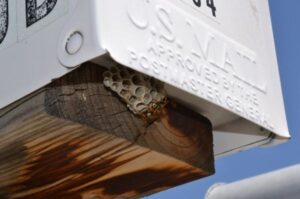Ah, summer. It’s undoubtedly the favorite season of the year for the majority of people, promising warmth, greenery, and hopefully plenty of sunshine.
Yet while I’m inclined to agree that there aren’t many negative aspects that come with the summertime, there are one or two things I’d get rid of if I was handed divine power one day.
Now, before you say it, I’m well aware that wasps are important to the ecosystem – and no, I wouldn’t really make a species extinct just because I’m personally terrified of them – but I’m sure we can all agree that there are few things that can ruin a BBQ, disrupt a garden party, or – in my case at least – send people running for cover quite like they do.
Thankfully I don’t work in an industry that sees me coming into contact with wasps, hornets, or other stinging insects on a regular basis. Which is why I often spare a thought for mail carriers.
A Reddit post gained traction recently after highlighting the issues faced by mail carriers where wasps are concerned. Yellowjackets, apparently, pose a particular problem, as they have a habit of building their nests inside mailboxes.
As per the post in question, mailboxes can look like a pretty ideal structure to wasps seeking to build a new home. They’re sheltered, hidden away from the world, and retain warmth at night, all things wasps appreciate in any potential abode.

The scent of the dryer sheet acts as a deterrent for wasps, thus preventing them from claiming a mailbox to build a nest.
So, without further ado, here’s what you need to be doing:
1: Select your scented dryer sheet. Remember, scent is key here, so preferably choose one with a strong fragrance.
2: Tape the sheet to the inside of your mailbox.
3: Ensure you’re replacing the dryer sheet with a fresh one periodically, so as not to let the scent fade beyond the point where it’s useful.

There you have it! Share this article if you want to spread some helpful information that might aid our hardworking mail carriers this summer.
If you found this article interesting and would like to see more, check out the article below: